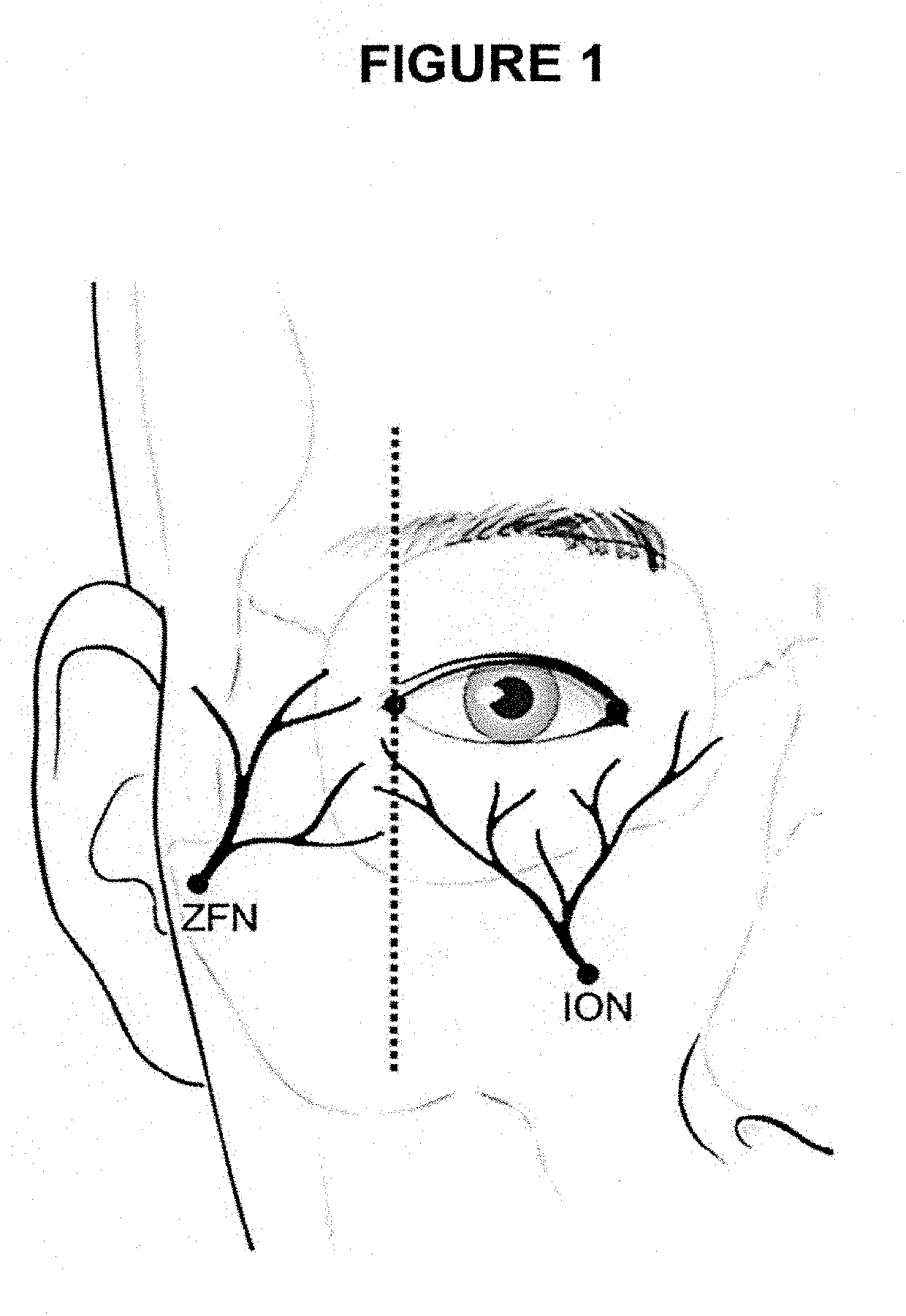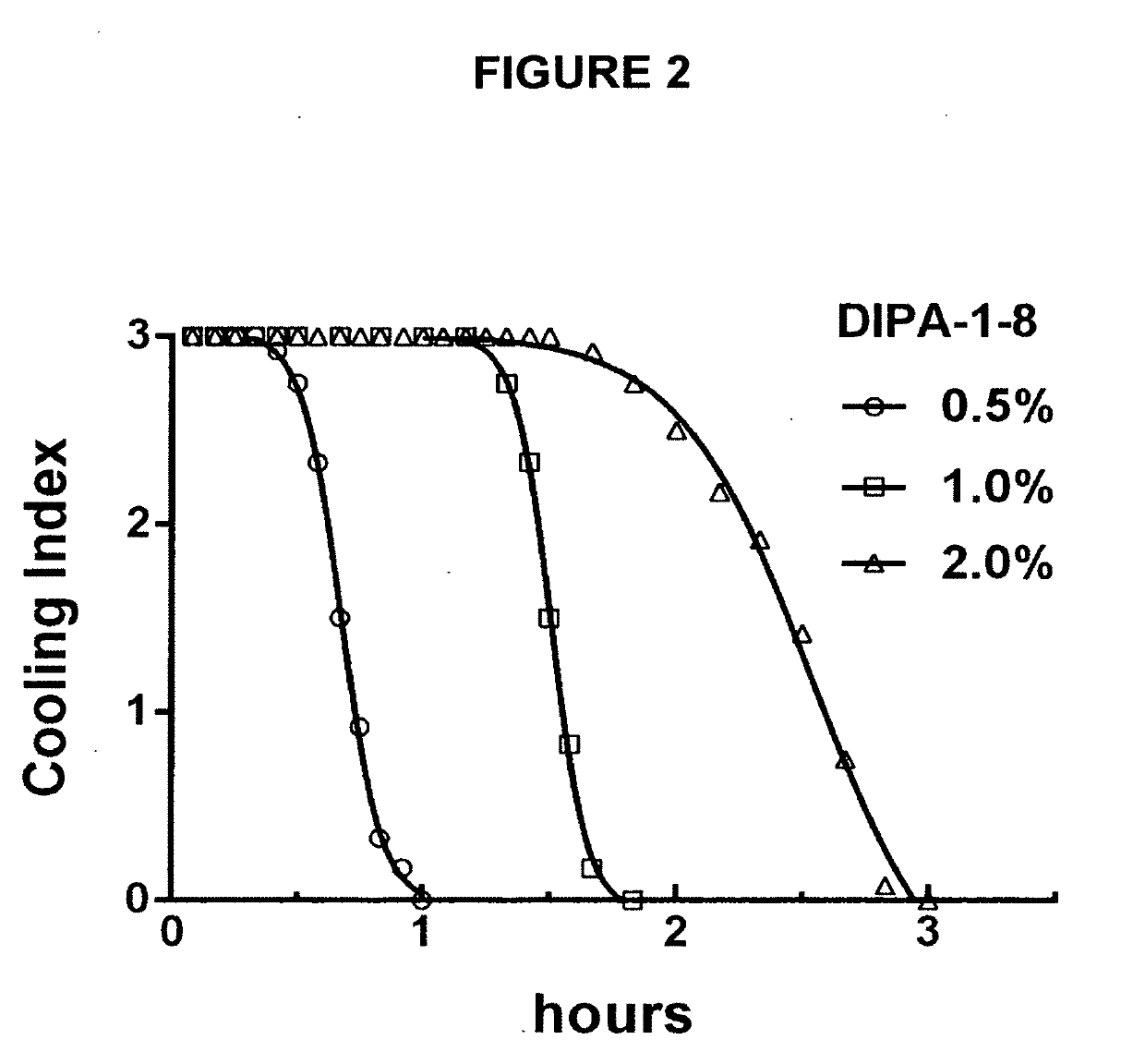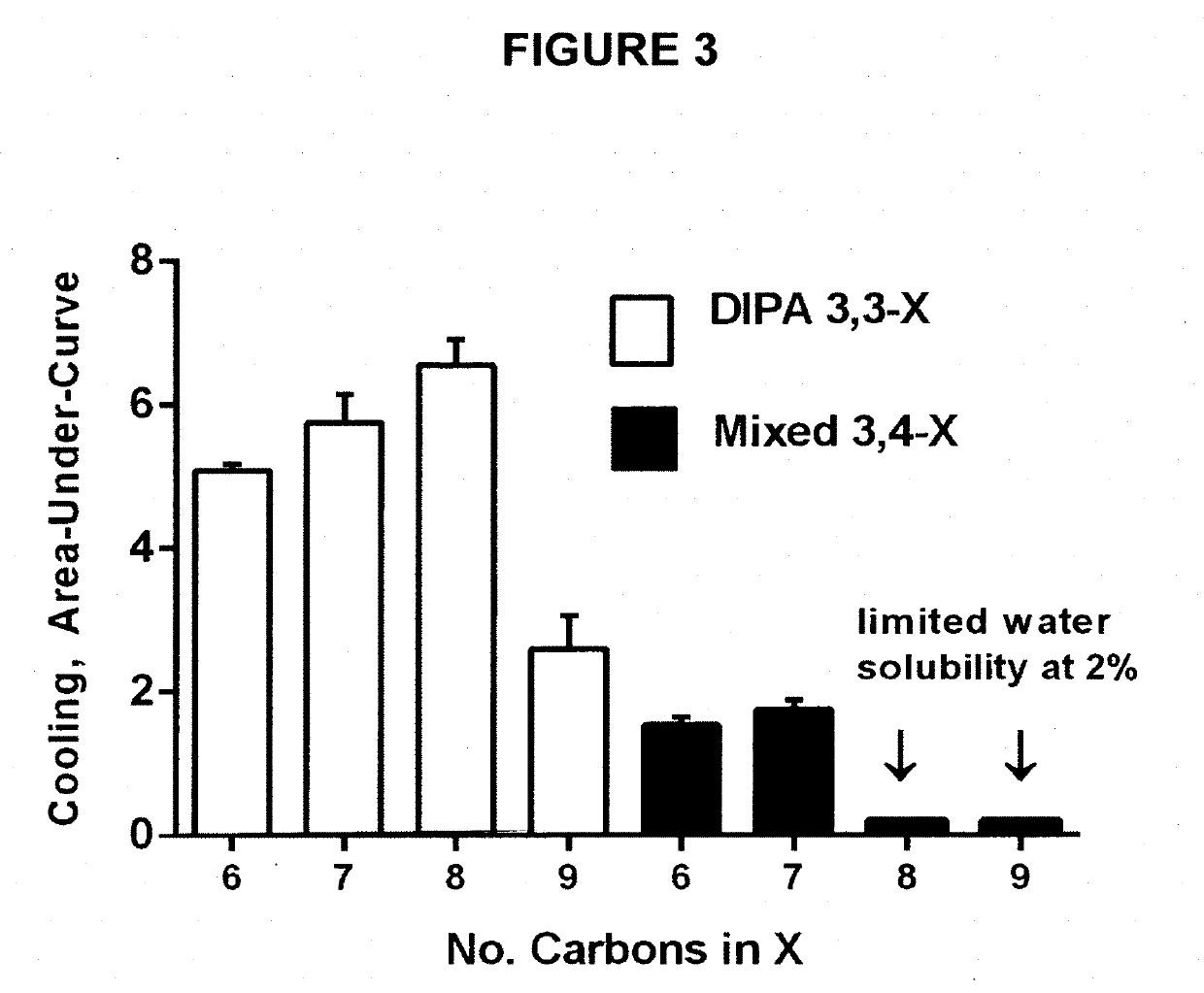Di-isopropyl-phosphinoyl-alkanes as topical agents for the treatment of sensory discomfort
a technology of phosphinoylalkane and diisopropylphosphinoylalkane, which is applied in the direction of phosphorous compound active ingredients, drug compositions, aerosol delivery, etc., can solve the problem of frequent skin injury site, and achieve the effect of reducing skin dysesthesia and facilitating formulation
- Summary
- Abstract
- Description
- Claims
- Application Information
AI Technical Summary
Benefits of technology
Problems solved by technology
Method used
Image
Examples
case study 1
[0219]Contact dermatitis. Two scientists working in the laboratory had allergic dermatitis of the hand in response to detergents and soaps. The hands were inflamed and extremely itchy. Applications of DIPA-1-7, 20 mg / mL, with a cotton-tipped applicator or gauze immediately stopped the itch and this effect lasted for at least 2 hours, and the suppression could be renewed by repeated application. One scientist, a world-renowned dermatologist with many publications on itch, noted that the DIPA-1-7 produced an “icy-cool” feeling on the inflamed skin and he had never encountered such a compound that was so effective in stopping itch so quickly.
[0220]A pharmacologist liked to work in the garden, but the thorns from bougainvillea stems and rose bushes, and the hair from azalea leaves, irritated his skin and caused intense itch. He noted that the sensory discomfort on the skin could be instantly stopped by DIPA-1-6 or DIPA-1-7, applied either as a 20 mg / mL aqueous solution, or as a cream (m...
case study 2
[0221]Atopic dermatitis A 8-year old boy had atopic dermatitis since childhood and exhibited the standard scars on the flexures of his elbow and knees. He had been treated with topical steroids, but the skin had become thin and easily broken. He objected to topical ointments because of the excessive “greasy” feel and stickiness, and because he felt they were not effective in stopping the itch. He also used moisturizers. The itch interfered with his sleep, especially during periods when his allergic rhinitis flared up. His parents were concerned with the scratching at night, poor scholastic performance, and lack of concentration. The subject was given 8×8 cm wipes saturated with 2 mL of DIPA-1-7 at 10 mg / mL in water, and given instructions to use the wipes after washing, to wipe over skin sites that itched in the evening, as he prepared for sleep. The wipes were immediately effective in reducing itch and scratching and facilitated sleep. Over a 2-week period of use, the skin lesions ...
case study 3
[0222]Pruritis and Xerosis of the Elderly An eighty-six year old retired widower decided to move from California to a hotel suite in Hong Kong for permanent residence. He had been an avid and skilled golfer for many years and had actinic keratosis and a dry skin. Over time, his skin became itchy, especially on the forearms and back torso. Scratching with a wooden stick on his back at first helped, but the skin became damaged, infected, and inflamed. He applied Eucerin's “Atopic Control” which helped relieve the dryness, but found it to be expensive, heavy and “greasy”, although it definitely provided some protection and relief. The itching and inflamed skin became unbearable during the hot summer months in Hong Kong, when the air conditioning was on full blast, and during the dryness of the fall season. His dermatologist prescribed a potent topical steroid, but his skin became fragile, infected, and ulcerated in some areas. His life was miserable because of the skin discomfort. He a...
PUM
| Property | Measurement | Unit |
|---|---|---|
| concentration | aaaaa | aaaaa |
| concentration | aaaaa | aaaaa |
| thick | aaaaa | aaaaa |
Abstract
Description
Claims
Application Information
 Login to View More
Login to View More - R&D
- Intellectual Property
- Life Sciences
- Materials
- Tech Scout
- Unparalleled Data Quality
- Higher Quality Content
- 60% Fewer Hallucinations
Browse by: Latest US Patents, China's latest patents, Technical Efficacy Thesaurus, Application Domain, Technology Topic, Popular Technical Reports.
© 2025 PatSnap. All rights reserved.Legal|Privacy policy|Modern Slavery Act Transparency Statement|Sitemap|About US| Contact US: help@patsnap.com



